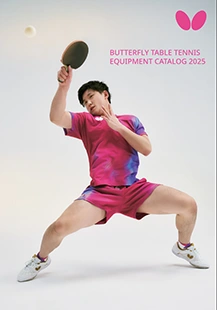Winning Without Speed and Power
by Han Xiao
Many of us watch the best players in the world and are extremely envious. It’s easy to get caught up in the amazing points that they play and try to emulate the shots that we see. As a result we go back to our clubs and try to play points like these players and find that although once in a while we can pull off the spectacular, the majority of the time we don’t have anywhere near the same speed, power, or level of fitness of a top 10 player in the world. However, it is possible to be competitive and win matches without a high level of speed or power like the best players in the world. Here are some tips to playing better in competition without having to hit rocket speed topsins.
- Focus a lot on your serve and receive game. Having a strong serve and return of serve can give you a huge advantage in points and negate the need to hit overly strong shots in the rally. Setting yourself up for easy winners and easy openings means you don’t have to be as quick or as powerful to win points.
- Learn how to vary the spin on the ball on all your shots. Surprisingly, the nospin or fake spin loop is one of the most effective shots when mixed in with normal topspin loops. It can be very difficult for the opponent to spot that a loop is actually nospin and make the necessary adjustments. Similarly, being able to push or chop different spins can give your opponent a giant headache.
- Use timing to your advantage. Learn to change the timing on your openings or finishing shots. For example, timing a loop early at the very top of the bounce rather than waiting for the ball to drop gives the opponent very little time to react, even if the loop is not very strong. Then learn to change the timing and pace of the ball in the rally. This is very advanced but when done correctly, it will really throw off most opponents and cause many errors.
- Be able to “hold” the ball when attacking, especially from the forehand side. When looping, don’t telegraph where the ball is about to go. Instead, learn to make your loops look similar and use your wrist and follow through to change the direction of the loop at the last second. On certain loops, you can even wait a split second longer to make contact so that your opponent even has difficulty guessing when contact will be made in addition to the placement of the shot. This way, your opponent will constantly be scrambling.
- Be able to block well. This doesn’t just mean being able to put the ball on the table, but also being able to block aggressively when given the opportunity. Blocking aggressively with good placement to back the opponent away from the table and get them running around the court will open up all sorts of opportunities, including being able to block passively on the next ball to bring them back into the table.
- Always think about placement. Analyze the weaknesses of the opponent and have a plan for exploiting them with the placement of your shots. Practice placement of your shots in training rather than always playing very safe.
In order to illustrate some of these points, we can look at a match from the 2004 Olympics between Jan-Ove Waldner and Timo Boll. At this point in Waldner’s career, he is physically unable to keep up completely with the top players in the world, still possessing sufficient but not overwhelming power and having lost a step in terms of his ability to cover the court. Still, he played a very successful tournament in the Olympics, upsetting multiple players and reaching the semi finals before losing to the eventual champion, Ryu Seung Min. Several of the things we’ve gone over stand out in this match against Timo Boll, especially Waldner’s ability to hold Timo Boll in place with the forehand, then placing the ball very well to force Boll to block with the backhand. Waldner also uses varied timing, placement, and spin to force a lot of defensive errors from Boll despite not having a lot of power on most of his attacks. Of course, Waldner was as creative and aggressive as ever on his serve and receive game, which was one of his trademarks. I hope you enjoy this match and learn from one of the legends of the game at the end of his career.
























